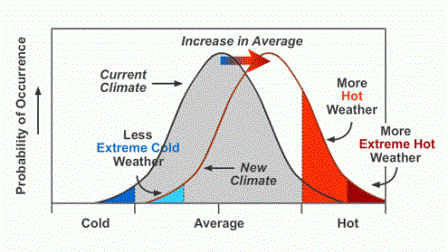Global warming, an omnipresent concern of our era, has provoked a myriad of discussions surrounding viable solutions. As temperatures steadily rise and natural catastrophes escalate, the imperative for global strategies to mitigate climate change becomes ever more pressing. The multifaceted nature of climate change poses significant challenges; yet, it also reveals profound opportunities for innovation and collective action. This discourse examines various global strategies that can be implemented to stave off the deleterious effects of global warming, thereby facilitating a cooler planet.
Firstly, one of the most efficacious strategies to combat climate change is the transition to renewable energy sources. The reliance on fossil fuels has been the principal driver of greenhouse gas emissions. A global pivot toward solar, wind, hydroelectric, and geothermal energies can drastically reduce carbon footprints. Countries like Denmark and Germany provide sterling examples of nations investing significantly in renewable infrastructures. By not only transitioning but also decentralizing energy production, communities can increase resilience, diminish dependence on fossil fuel imports, and stabilize energy costs.
Moreover, enhancing energy efficiency across various sectors presents a formidable yet often overlooked avenue for combating global warming. The implementation of energy-efficient technologies in buildings, transportation, and industrial processes could yield substantial reductions in energy consumption. Retrofits of existing structures with better insulation, energy-efficient appliances, and smart grids enhance performance while simultaneously reducing emissions. The adoption of electric vehicles and improvements in public transportation systems can lead to a marked decrease in vehicular emissions.
Another critical strategy lies in the realm of sustainable agriculture. Agriculture contributes significantly to greenhouse gas emissions through practices such as deforestation for farmland, excessive fertilizer use, and methane emissions from livestock. Promoting sustainable agricultural practices, such as agroforestry, crop rotation, and organic farming, can mitigate these emissions. These practices not only contribute to carbon sequestration but also foster biodiversity and improve soil health. Initiatives aimed at reducing food waste—up to one-third of food produced worldwide is wasted—are equally vital. Efficient supply chains and consumer education can play instrumental roles in reducing this wastage.
The preservation and restoration of natural habitats is also paramount in the fight against global warming. Forests, wetlands, and oceans serve as significant carbon sinks, sequestering carbon dioxide from the atmosphere. Deforestation and habitat degradation not only release stored carbon but also diminish the planet’s capacity to rein in future emissions. Thus, global conservation initiatives, coupled with reforestation projects, can actively contribute to climate mitigation efforts. Additionally, protecting biodiversity ensures ecosystem resilience, which is critical in the face of climate fluctuations.
International cooperation is indispensable in this endeavor, as global warming is a borderless issue. The Paris Agreement serves as a testament to the collective urgency for action. Signatory nations have committed to limiting global temperature rise and enhancing adaptive capacities. Nevertheless, commitments must translate into actionable policies at national and local levels. Stronger enforcement mechanisms and accountability frameworks are essential in ensuring that nations adhere to their climate commitments.
Furthermore, innovative technological advancements hold promise as catalysts for climate action. Carbon capture and storage (CCS) technologies can mitigate emissions from industrial sites. Emerging technologies designed to draw down atmospheric carbon directly present exciting possibilities for reducing overall greenhouse gas concentrations. Investment in research and development is critical for fostering such innovations, enabling the development and deployment of scalable solutions.
Education and public engagement also play pivotal roles in the global response to climate change. Raising awareness about the impacts of individual carbon footprints can empower citizens to make informed choices about consumption and lifestyle behaviors. Grassroots movements have shown how localized initiatives can catalyze global change. When people understand the urgency of climate action, they can advocate for policies that prioritize sustainability and environmental stewardship.
Lastly, integrating climate considerations into economic frameworks will help build a more sustainable future. Transitioning to a circular economy, wherein resources are reused and recycled, minimizes waste and reduces environmental impact. Implementing carbon pricing mechanisms, such as carbon taxes or cap-and-trade systems, can incentivize companies to reduce their emissions. Economists argue that placing a price on carbon is essential for creating a market environment that favors sustainable practices.
In conclusion, the multifaceted strategies discussed herein illustrate the comprehensive approach required to address global warming effectively. Transitioning to renewable energy, enhancing energy efficiency, promoting sustainable agriculture, preserving natural habitats, fostering international cooperation, investing in technology, engaging the public, and integrating climate considerations into economic systems are all fundamental components of a cohesive climate action plan. By collectively addressing these challenges with resolve, the world can work towards a cooler, more sustainable future, not only for generations to come but also for the myriad species with whom we share this planet. The time to act is now, and a concerted effort will reveal itself as a pathway towards mitigation and resilience against the inevitable changes wrought by climate change.







